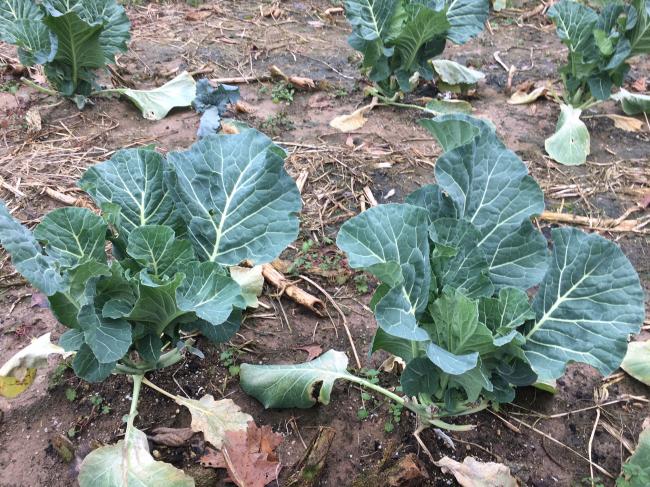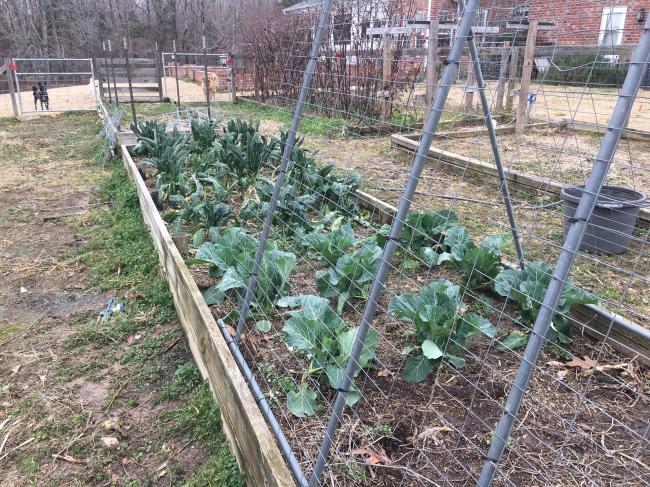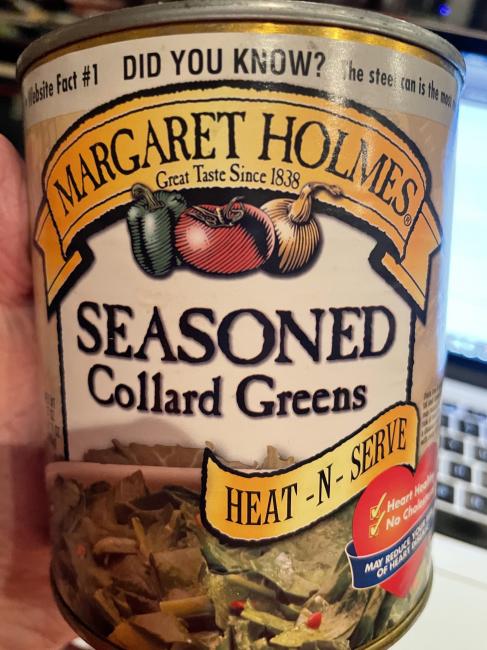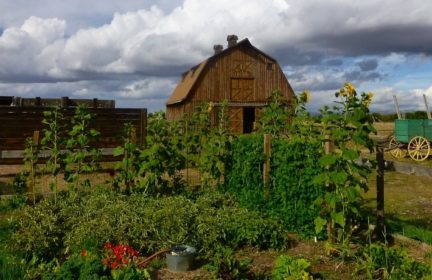Great survival crop
I’ll be sowing Amaranth and Sorghum this year (Thanks “Redneck”). I planted Jerusalem Artichokes last year. They are great survival plants.
-
Comments (25)
-
RedneckContributor - January 2, 2021
You know yet which amaranth variety you will be planting?
-
Winston Smith - January 3, 2021
I have several varieties. Most are Loves-Lies-Bleeding. Is this a variety you like?
-
-
RedneckContributor - January 2, 2021
Those are great summer survival crops. I find collards & kale to be great cool weather survival crops… especially collards as they can handle cold weather better than my Lacinato kale and because they put out more & bigger leaves. Siberian kale handles cold weather better than anything I’ve grown. When gardening with an eye towards prepping, extending your growing season is critical. Collards do that for me.
I have 5 garden plants which I consider great survival crops. I grow these each year plus keep hundreds of pounds of their seed in storage. They are the three sisters (field corn, pole beans & winter squash), amaranth & collards. With those I have almost complete nutrition and I can harvest food at least 10 months out of the year. This next year I’m test growing upland rice, which doesn’t need flooded fields. It just might join these five.
Took these pics today, in January, of the collards & kale. The kale is showing some freeze damage but I’ll still be picking it tomorrow. We’ve had a pretty cold winter so far with quite a few days with lows around 20.
-
Winston Smith - January 3, 2021
Great advice and beautiful crops. I’m envious. I have the seeds you use for your primary survival crops, but haven’t planted them. Hope to start experimenting this year with limited space in the backyard. Interesting on rice. I probably won’t tackle that, we’re more tater eaters in this household. But, rice is such a great filler for meals. I’ve got about 800 lbs. stored, but in an emergency that wouldn’t last my family very long. I’ll research it, I could change my mind.
Have you thought about Tree Collards? I’m going to attempt it. Something for my little Food Forest. They only live 4 or 5 years, but can be easily propagated.
I found this on growing Tree Collards. Interesting.
https://youtu.be/KA7YA495qJw -
RedneckContributor - January 3, 2021
Never heard of them. Seems like they require staking. One major issue gardeners have to deal with, especially survival gardeners, is varieties that tend to lodge… fall over in winds. That is one reason why I went away from the giant amaranth, as the wind during a storm can sure do some damage.
Let me know how yours turns out.
-
Winston Smith - January 4, 2021
Thanks. I’ll send a pic at the end of next summer.
-
phiguru - January 3, 2021
My husband grew up eating collards and swears they taste better when frost nipped. I bet those will be perfect!
In the far North, where our growing season is roughly 90 days, I tend a patch of watercress (early Spring) and plant chard (Fall harvest) instead of kale or collards. I also tend a patch of cattails. We plant pumpkins, dent corn, and trout beans as our 3 Sisters and I grow potatoes on the side for extra calories. We also have apples and bearberry that store well. Sunchokes and cranberries are on my list for the next few years. I adore both but I have to figure out the right land for each.
-
Winston Smith - January 3, 2021
I’ve heard collards need a frost for flavor. As a Southerner, you’d think I would have grown up with collards, but we never had them. Probably too much trouble to prepare. I’ve had some over the last few years and loved them. Time to plant!
-
RedneckContributor - January 3, 2021
They don’t need a frost for flavor. Even when warm, I love the taste of collards. I find collards to be the easiest greens to clean, destem & process. Collards do get sweeter after a frost. My understanding is they convert some starch to sugar, to act as an antifreeze. When I cook my greens, I normally add sugar & vinegar, so I can make them as sweet as I want. I find the vinegar helps cut the fat from the ham hocks. Plus, I cook mine in low sodium chicken broth… not water.
I didn’t grow up eating collards. We ate turnip greens almost exclusively with some mustard greens. However once I started growing my own, I realized collards were easier to grow, I could get more greens from a given size plot and since the leaves are so big & flat, collards are much easier to clean. Plus collards keep their texture after hours of simmering. Turnip greens get mushy.
-
Winston Smith - January 3, 2021
I know these aren’t nearly as good as fresh, but they’re very tasty for canned. I doctor them up with vinegar. The company is about 10 miles from my house.
-
RedneckContributor - January 3, 2021
I’ve never had canned greens of any type before. I usually have plenty in the garden or freezers but if not, our local stores always have collards & turnip greens during their season. I don’t wish to sound stuck up but I rarely eat veggies from a can. I enjoy fresh much better, even if from the store or farmers market. Of course fresh is much healthier. Time is not really a factor because whenever I cook, I do in very large batches & freeze numerous containers. Our freezers are loaded with freshly frozen veggies… most from my garden.
Actually, the only canned veggie I eat is green beans, even though I grow & freeze my own. I just love good ole green bean casserole and to me it just tastes better using canned as opposed to fresh. Go figure! 🙂
-
Gideon ParkerStaff - January 3, 2021
phiguru- Do you eat the cattails? I’ve seen that the bottoms can be heated up and eaten like spaghetti.
-
phiguru - January 3, 2021
Yes! All the parts of the cattail is edible. It’s a terrific plant for foraging and well worth the habitat space since animals like it too.
The young shoots are similar to asparagus. Older roots can be dried and made into flour that is similar to casava flour. The new leaves can be eaten raw, old leaves are better boiled. Even the fluff can substitute for flour in cookies and the pollen can sub for cornstarch in gravy.
Wild greens come up before anything cultivated in Spring, so I forage those early greens. I make a salad from young cattail shoots and leaves, fiddlehead ferns, dandelion greens, and watercress with a dressing of cider vinegar and maple syrup.
-
Gideon ParkerStaff - January 5, 2021
I’m gonna have to keep an eye out for a cattail on my next walk with the dog! Pretty cool plant
-
-
Gideon ParkerStaff - January 3, 2021
How did your Jerusalem Artichokes turn out? That is a great video, looks like they really did well.
-
Winston Smith - January 3, 2021
I didn’t dig any of the Jerusalem Artichokes up since I planted them so late. Figured I’d let them go another year. Yeah, I liked the guy’s video.
-
-
LBV - January 3, 2021
If I was growing for survival, I would look at foods that produce a lot in less space and can be stored. I would consider potatoes, climbing beans (as opposed to dwarf), broad beans for winter cropping. Multisown beetroot can be used for both leaf and root. Collards are good as you can harvest leaves as opposed to the whole plant. Tomatoes and zucchini if you are able to preserve them, and pumpkins that are suitable for storage.
-
RedneckContributor - January 3, 2021
Agree & good choices. When looking for foods that produce a lot, in less space & can be stored, I give you the three sisters… field corn, pole beans & winter squash (pumpkin). If it made sense for the native Americans, it should make sense for survival gardening. Storage is very important for survival gardening but equal to storage is extending your growing season. Greens are perfect for that. One can grow collards in spring & fall and grow amaranth all summer. I can have greens 10 months (or more) out of the year & not spend any time or energy on storage.
IMO, the problem with potatoes is who is gonna have enough seed potatoes already in storage, to actually make a difference? I mean, you can’t store seed potatoes for multiple years like you can garden seed. For a food to be a good survival food, the number one aspect has to be do you already have it in storage? I have hundreds of pounds of garden seed in storage, but no seed potatoes. I’ve grown both Irish & sweet potatoes, but always go to the coop for the guaranteed disease free seed potatoes & the sweet potato slips.
So my main starch, as of now, will be the corn. But that is why I will be testing highland rice this year. If it works as expected, that will give me another nutritious starch that should be easy to store its seed.
-
LBV - January 3, 2021
What is Highland rice?
-
RedneckContributor - January 4, 2021
Rice varieties that grow on dry land. No need for the typical flooded field. Many are designed to grow up north too, with their short growing season.
-
LBV - January 3, 2021
Just thinking about what you mentioned re potatoes. I think you would need to look at growing differently, be rigid about crop rotation to avoid disease and be rigid regarding potential disease. Just a quick search found this article from Mother Earth News – https://www.motherearthnews.com/organic-gardening/heirloom-potato-varieties-zewz1303zsch
-
RedneckContributor - January 4, 2021
Don’t get me wrong. I think potatoes make a great survival crop. However for that to happen, one would need to already be a rather large scale potato grower, where you already keep enough seed potatoes for next year, or you would need to be lucky & be able to bring in seed potato at the start of the crisis.
-
phiguru - January 3, 2021
I think climate, topography, personal taste, and available land use all matter. I don’t store seed for more than 2 years – I plant all but a small emergency holdback each year and save seeds from my plants each year.
I’m quite curious about your adventures in rice and amaranth. I’m thinking of trying buckwheat when I can figure out how to redo the rotation correctly.
I have rocky, acidic, shady soil on slopes, currently covered in snow. We have to rely on storage but our root cellar keeps most of our food.
I’ve not read your post history, so forgive me if you talk about this elsewhere – do you nixtamalize a portion of your corn? This just came up in my ladies circle – about half didn’t know that corn needs to be properly prepared to prevent pellagra.
Potatoes grow great for me. My yield is roughly 80 pounds per 10 pounds seed. We eat roughly 200 pounds per year, so I have no trouble with storing and growing that each year.
I could grow kale but gosh I hate kale so I just grow and forage other things. I mention this because I think it is important for people to know/accept that they don’t have to grow or perhaps cannot grow (or cook or store well) “the very best thing”. That’s OK – we each need to work out what will be good for our situation. 😀
-
RedneckContributor - January 4, 2021
Agree completely. One must grow what works best for their environment and grow food they like to eat. My point is not for everyone to grow exactly everything I mention, but to give thought to what they could grow in a survival situation. I do rotate my crops. Besides helping the soil it helps prevent plant diseases.
Potatoes grow great here but they really hurt my back to dig them up. Only way I’ll grow them again is to plant a separate plot where I can use my tractor’s middle buster to bring them to the surface.
I’ve never tried to nixtamalize corn but know the native Americans would soak their corn in wood ash water. I doubt I would need to do it, as I plan to have a very balanced diet. Amaranth is a powerhouse of nutrition and just happens to be loaded with B vitamins, as well as the other leafy greens such as collards & kale. I have a pond stocked with thousands of pounds of grain fed catfish, and they also are a great source of vitamin B, as are eggs from my chickens. My understanding is that the veggies I plan to grow will provide complete nutrition and pellagra should not be an issue.
I really wonder how the native Americans figured out how to do this? Why would they even think of soaking corn in wood ash water?
-
-
Robert LarsonContributor - January 5, 2021
I used to live in an apartment and one thing that I grew while living there was some potatoes in a 5 gallon bucket.
I went to my local grocery store bakery and asked if they had any old buckets they were going to throw out, they handed me a couple that had frosting in them. Free buckets! I went home and power washed, soaped, bleached and scrubbed the heck out of them. I then drilled some holes in the bottom for drainage.
I then took two normal potatoes that I got from the grocery store and cut them in half. Filled the bucket about 1/3 full with dirt and buried the potato halves. Once the leaves poked out of the ground about an inch I buried them. Then let the leaves grow about an inch above the ground and buried them again. Keep this up until your bucket is full of dirt. This forces the potatoes to grow fast and keep trying to reach out for the sunlight. Towards fall I dug them up and had a ton of little potatoes.
This was just my little apartment experiment, and I know that I probably didn’t do things the best way possible, but it was fun, took up little room, and was all done for less than $1.
-
- News for the week of 2025-07-07 - 4 days ago
- Fun ways to teach kids outdoor/survival skills - 1 week ago
- News for the week of 2025-06-30 - 2 weeks ago
- News for the week of 2025-06-23 - 3 weeks ago
- News for the week of 2025-06-16 - 3 weeks ago
This forum is heavily moderated to keep things valuable to as many people as possible. Full community policies are here. The basics:
- 1. Be nice to each other.
- 2. Stay focused on prepping.
- 3. Avoid politics, religion, and other arguments.
- 4. No unfounded conspiracies, fake news, etc.
- 5. Debate ideas, not people.



